It was when I reached the summit of the Matterhorn that everything fell into place. Not the Alpine Matterhorn, you understand, but Yorkshire’s very own Matterhorn – Roseberry Topping – from whose lofty peak I savoured a sumptuous 360-degree view of Cleveland.
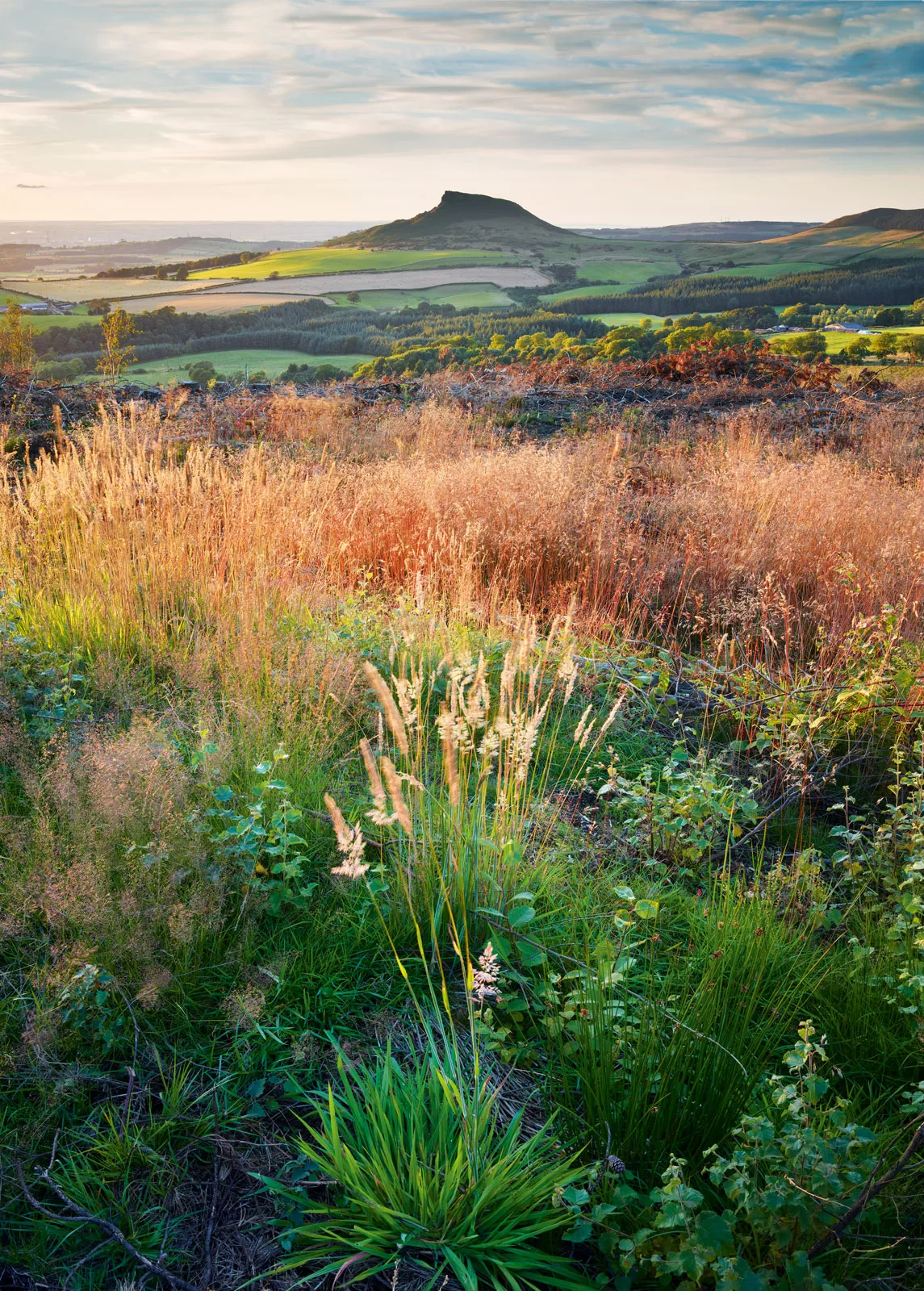
Behind me there ranged mile after mile of the dramatic escarpment that bounds the North York Moors. Before me, some eight miles distant, I could make out the North Sea whose restless waters would provide an ever-changing backdrop to the second half of my journey. Between them they represented the essence of the Cleveland Way: almost exactly equal parts of inspiring moorland emptiness and invigorating coastal busyness, with both offering staggering but very different panoramas.
Short circuits

Like so many walkers before me, I was attempting the 108-mile horseshoe-shaped National Trail clockwise, heading out from Helmsley to tackle the North York Moors section before the pathway took me south along the coast from Saltburn to Filey Brigg, a mile or so from the small coastal resort of Filey. I was to discover, however, that the Cleveland Way is not just for weather-beaten long-distance hikers: the official guide contained plenty of shorter circular walks that incorporated stretches of the path and could be completed in a day or an afternoon.
I left Helmsley with great reluctance. After hopping off the bus that had carried me from York railway station, I found myself in a small market town abuzz with lunch-time workers. The late autumn sunshine warmed its honey-coloured stone and russet pantiles to a veritable glow. I could have happily spent the afternoon ambling around its little shops and castle ruins.
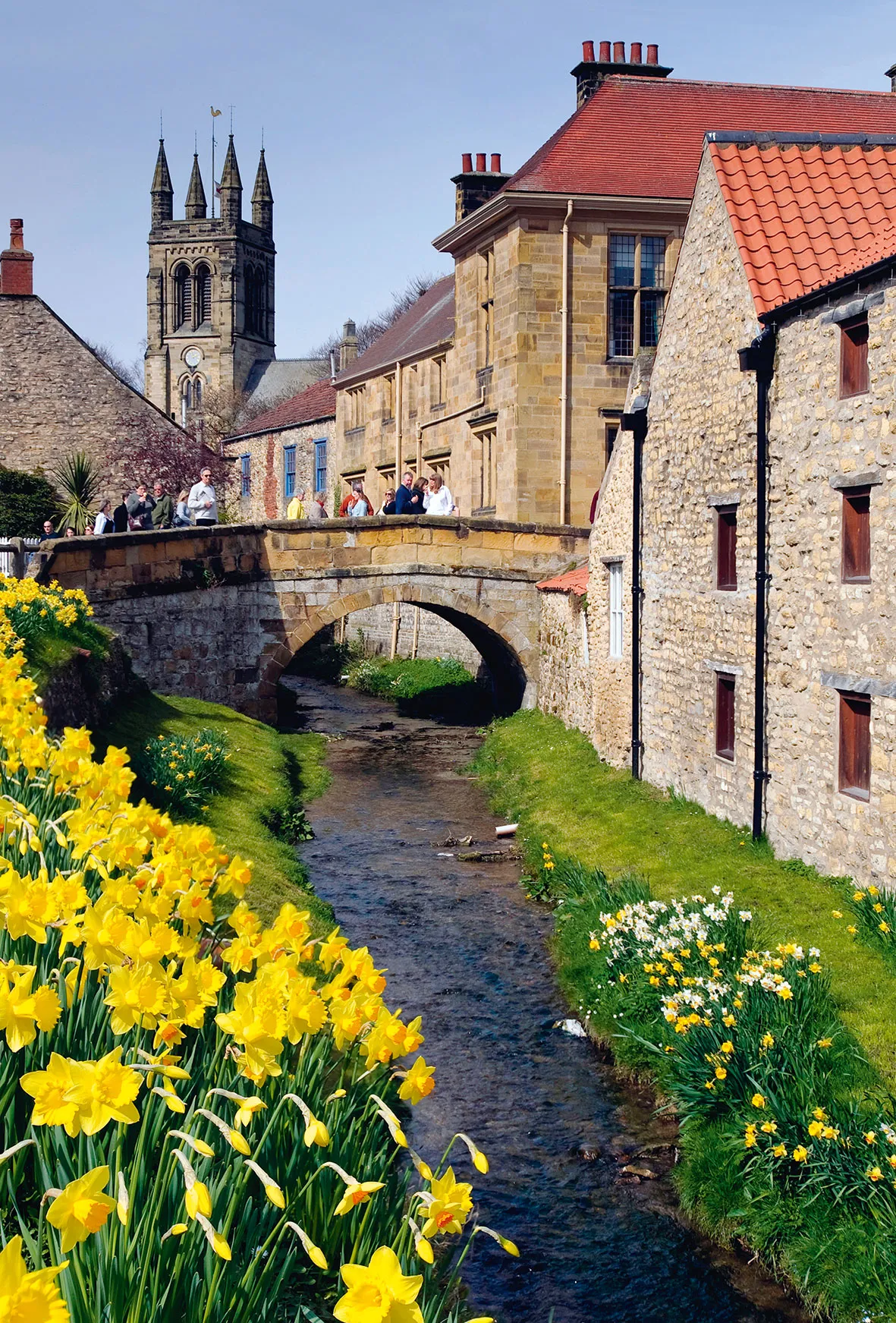
However, I did not have all that far to go – an hour’s walk crossing pleasant farmland and skirting woods – before the sight of Rievaulx Abbey put all thoughts of genteel urban pleasures out of my head. Just half a mile off the path, the extensive remains of the 12th-century Cistercian abbey set in the woods of the Rye Valley made for a most agreeable little detour.

The sun was still high in the sky when, turning a corner, an extraordinary vista suddenly appeared before me as if by some magician’s sleight of hand. I found myself looking down upon the pyramid-like Hood Hill and the Vales of York, a sea of emeralds and jades stretching all the way to distant Wensleydale. It was easy to see how this remarkable view from the top of Sutton Bank had kept JMW Turner busy when he came here 200 years ago.
Elemental pleasures
The Cleveland Way hugs the escarpments of the Hambleton Hills and the Cleveland Hills for the next 40 miles, almost without deviation, doling out views over the countryside below with the reckless generosity of a lottery winner. It was therefore particularly pleasing that, for the first two nights, my accommodation was right on the path of the trail, allowing me to feast my eyes until the light dwindled to a crepuscular hue. I could even take refreshment in a café in pretty Osmotherley without stepping off the route.
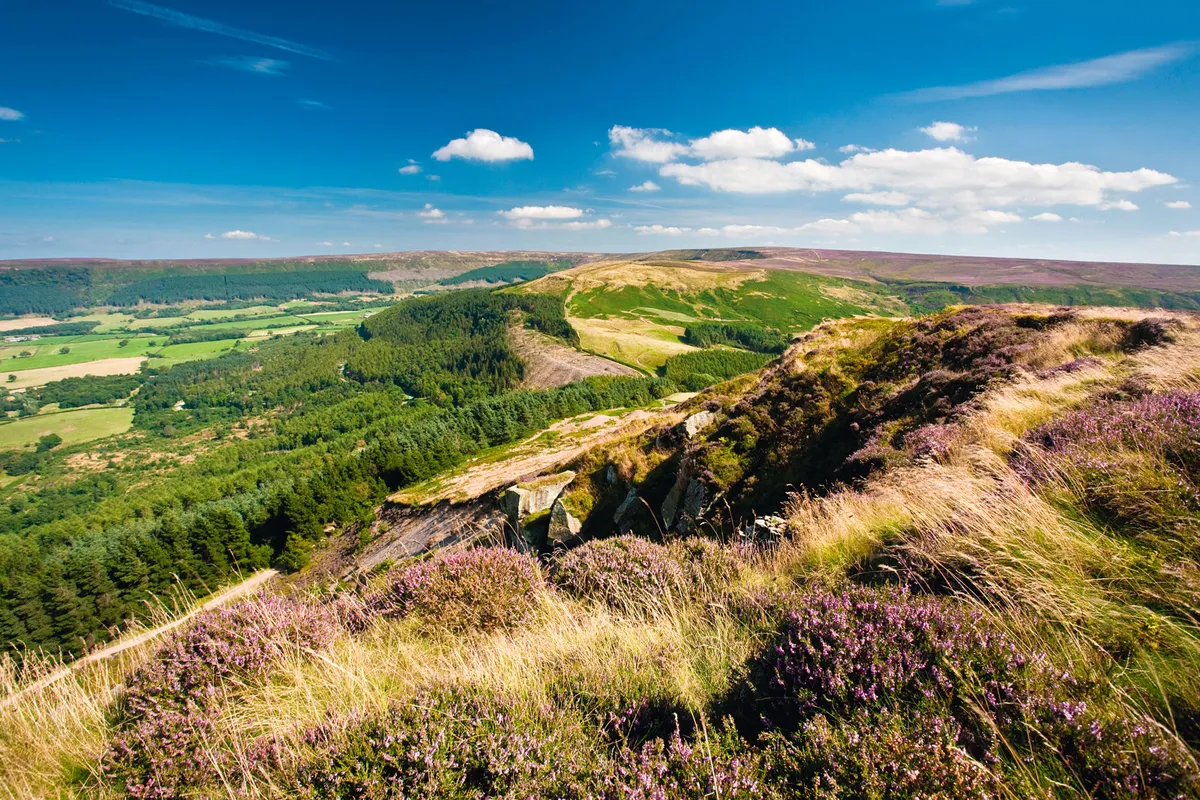
The pleasure of finding shelter at the end of the day was intensified by having spent so much time in wide open spaces, exposed to the elements. I was thankful as I tramped across Urra Moor – the highest point on the Cleveland Way – that the predominant elements on that particular day were sunshine and a soft breeze, for a gale-propelled rainstorm would have been bracing indeed, given that there is nowhere to hide.
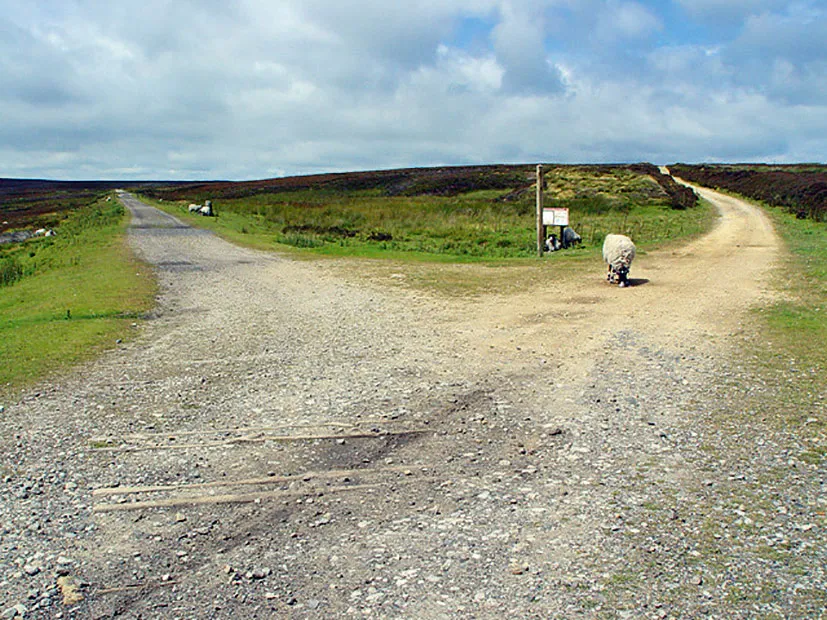
The sense of remoteness increased as I walked further into the moor along the track-bed of the former Rosedale Ironstone Railway until at length I gained Bloworth Crossing. Pottering around the ruins of a little clutch of cottages nearby – jokingly nicknamed ‘Siberia’ by railway workers – I imagined myself into the lives of the people who once called this wilderness home.
Hitting the high notes
I had struck lucky with the weather, and I was even luckier to have the moors all to myself for hours at a stretch each day.
It’s especially worth visiting in September, when the heather is in full bloom. The North York Moors is the largest continuous area of heather moorland in England and takes on a regal character when robed in purple.
After passing through Kildale, a little village with a railway station on the sumptuous Esk Valley line, this section of the Cleveland Way hits two high points: the monument to local hero Captain Cook, perched up on Easby Moor, and Roseberry Topping, the Yorkshire Matterhorn, some 320m above sea level and nicknamed for the resemblance it bears to its Alpine cousin. From the latter I bade a fond farewell to the moor before descending towards the coast and Saltburn-by-the-Sea.
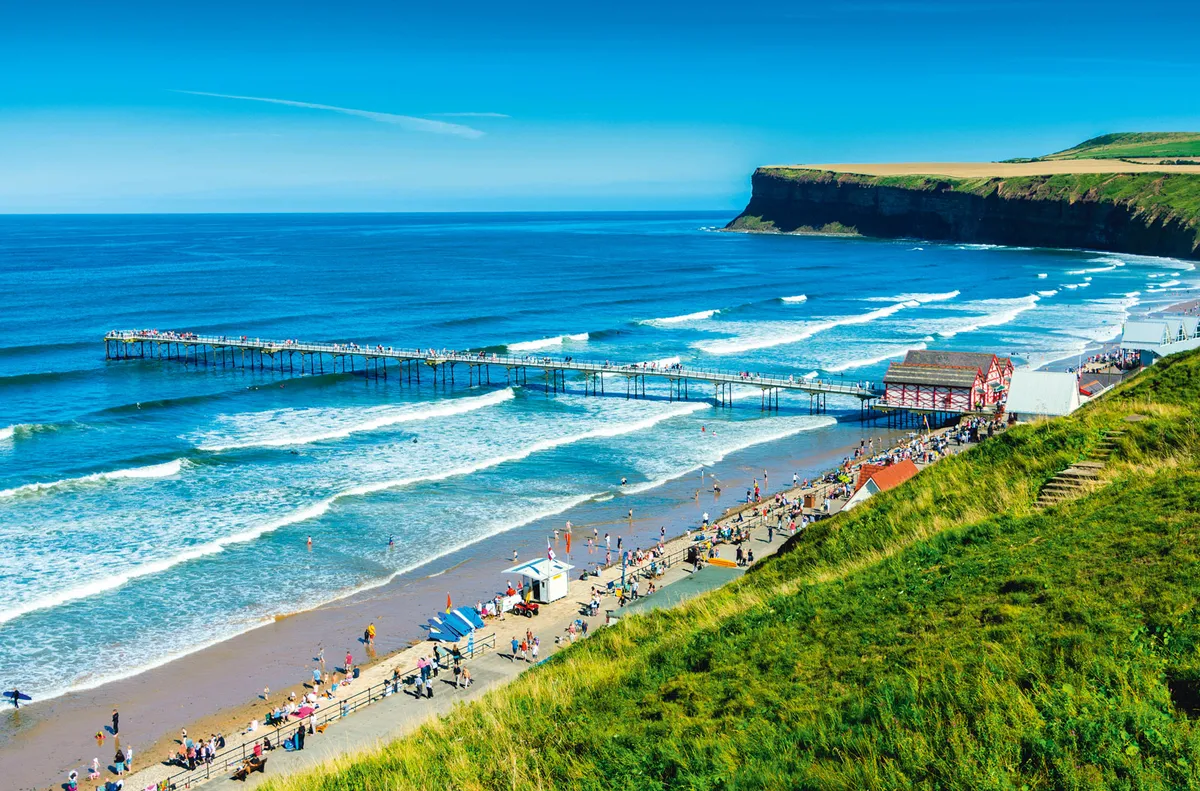
Saltburn signals the route’s half-way mark, both in terms of mileage and the climbing required. This latter half of my journey would consist of some of England’s finest cliff walking interspersed with the full gamut of north-eastern coastal communities, from almost deserted fishing villages to resorts humming with visitors. The seaside town, with its miniature pier and modest aspirations to resorthood, was my gentle introduction to this new world.
As I headed south, my way became strewn with marram grass, harebells, thistles pregnant with fluffy seeds, and all manner of competing umbellifers. Climbing high up onto the cliffs at Boulby, the moorland birds were replaced by lesser black-backed gulls and, to my delight, yellow-browed warblers, tiny greenish birds not much bigger than a goldcrest. In several places I came across them flitting in and out of the gorse bushes, passing through the UK on their migration south. Looking back north, I also noticed the sky was full of paragliders, the gaudy colours of their canopies soon joined by a rainbow as a shower rolled in off the North Sea.
With the coast at last came encounters with people, the most memorable of which occurred near Hinderwell. There I met a Dutchman called Aris, who had come over on a ferry with a folding bicycle, £10 in cash, a small tent and an indomitable spirit of adventure. His love of this coastline drew him back there time and time again, he told me. If only he could work out where he was, all would be fine. I gave him some maps of the local area and he thanked me profusely, but he was clearly a man who travelled by instinct so whether he actually consulted them I’ll never know.
All star coast
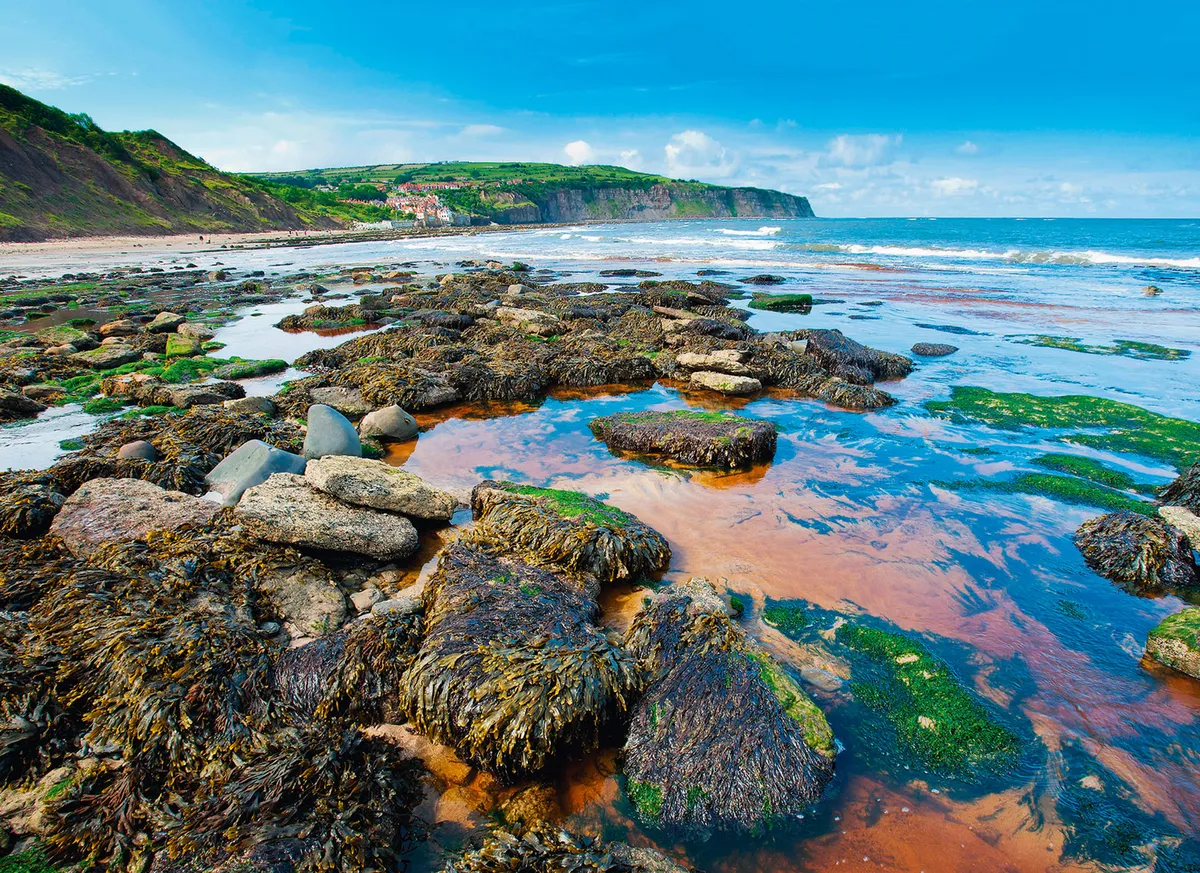
If he did so, he’d have found that the Cleveland Way’s three best-known stars are all on the coast: Whitby, Robin Hood’s Bay and Scarborough are all very different and all repay an extended stay. I have visited Whitby many times but still relished climbing the 199 steps that take pilgrims up from the fleshpots by the harbour (well, the chip shops and jet stone sellers) to the ruins of the abbey that famously inspired Bram Stoker’s Dracula.

However, it’s an even darker side of the town’s history – the prosperity it acquired in the 18th and 19th centuries through the whaling industry – that came to mind as I passed beneath the whalebone arch high up on Whitby’s west cliff.
Robin Hood’s Bay (one end of the Sea to Sea cycle route) thronged with schoolchildren earnestly gazing down at the shoreline.
The wave-cut platform revealed at low tide contains both a mass of concentric circles and a wealth of geology lessons, as their teacher was quick to point out.
And then came Scarborough – as unrepentant a seaside resort as you’re likely to find. I forged along its north beach, around the headland topped with a Norman castle, and made for the south beach, with its cliff lifts and amusement arcades. It was impossible not to crack a grin as I sauntered along the promenade – after all, this is a town built almost expressly for pleasure.

One might say the same thing of the Cleveland Way. I’ve completed a good number of National Trails and few rival this one when it comes to the sheer amount of time I spent enjoying magnificent views.
After a week of climbs and descents, moorland and seashore, my body had that pleasant wiry-but-weary feel to it as I headed for Filey railway station and onward home. But to be honest, after taking in quite so many big skies and expansive horizons, it was really my eyes that needed a rest.
Read Dixe's Guide to walking the Cleveland Way: places to stay, things to do

